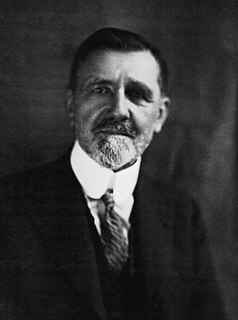Related Research Articles
In mathematics, specifically in measure theory, a Borel measure on a topological space is a measure that is defined on all open sets. Some authors require additional restrictions on the measure, as described below.

John von Neumann was a Hungarian-American mathematician, physicist, computer scientist, engineer and polymath. Von Neumann was generally regarded as the foremost mathematician of his time and said to be "the last representative of the great mathematicians". He integrated pure and applied sciences.
In measure theory, a branch of mathematics, the Lebesgue measure, named after French mathematician Henri Lebesgue, is the standard way of assigning a measure to subsets of n-dimensional Euclidean space. For n = 1, 2, or 3, it coincides with the standard measure of length, area, or volume. In general, it is also called n-dimensional volume, n-volume, or simply volume. It is used throughout real analysis, in particular to define Lebesgue integration. Sets that can be assigned a Lebesgue measure are called Lebesgue-measurable; the measure of the Lebesgue-measurable set A is here denoted by λ(A).

Set theory is the branch of mathematical logic that studies sets, which can be informally described as collections of objects. Although objects of any kind can be collected into a set, set theory, as a branch of mathematics, is mostly concerned with those that are relevant to mathematics as a whole.
In mathematics, a measurable space or Borel space is a basic object in measure theory. It consists of a set and a σ-algebra, which defines the subsets that will be measured.

Félix Édouard Justin Émile Borel was a French mathematician and politician. As a mathematician, he was known for his founding work in the areas of measure theory and probability.

Armand Borel was a Swiss mathematician, born in La Chaux-de-Fonds, and was a permanent professor at the Institute for Advanced Study in Princeton, New Jersey, United States from 1957 to 1993. He worked in algebraic topology, in the theory of Lie groups, and was one of the creators of the contemporary theory of linear algebraic groups.
In mathematics, a Vitali set is an elementary example of a set of real numbers that is not Lebesgue measurable, found by Giuseppe Vitali in 1905. The Vitali theorem is the existence theorem that there are such sets. There are uncountably many Vitali sets, and their existence depends on the axiom of choice. In 1970, Robert Solovay constructed a model of Zermelo–Fraenkel set theory without the axiom of choice where all sets of real numbers are Lebesgue measurable, assuming the existence of an inaccessible cardinal.
In mathematics, a non-measurable set is a set which cannot be assigned a meaningful "volume". The mathematical existence of such sets is construed to provide information about the notions of length, area and volume in formal set theory. In Zermelo-Fraenkel set theory, the axiom of choice entails that non-measurable subsets of exist.
In mathematics and functional analysis a direct integral is a generalization of the concept of direct sum. The theory is most developed for direct integrals of Hilbert spaces and direct integrals of von Neumann algebras. The concept was introduced in 1949 by John von Neumann in one of the papers in the series On Rings of Operators. One of von Neumann's goals in this paper was to reduce the classification of von Neumann algebras on separable Hilbert spaces to the classification of so-called factors. Factors are analogous to full matrix algebras over a field, and von Neumann wanted to prove a continuous analogue of the Artin–Wedderburn theorem classifying semi-simple rings.
In functional analysis, an abelian von Neumann algebra is a von Neumann algebra of operators on a Hilbert space in which all elements commute.

Robert Martin Solovay is an American mathematician specializing in set theory.

Matthew Dean Foreman is an American mathematician at University of California, Irvine. He has made notable contributions in set theory and in ergodic theory.

In mathematics, a space is a set with some added structure.
In mathematics, Maharam's theorem is a deep result about the decomposability of measure spaces, which plays an important role in the theory of Banach spaces. In brief, it states that every complete measure space is decomposable into "non-atomic parts", and "purely atomic parts", using the counting measure on some discrete space. The theorem is due to Dorothy Maharam. It was extended to localizable measure spaces by Irving Segal.
In mathematics — specifically, in measure theory and functional analysis — the cylindrical σ-algebra or product σ-algebra is a σ-algebra often used in the study either product measure or probability measure of random variables on Banach spaces.
In the mathematical field of set theory, the Solovay model is a model constructed by Robert M. Solovay (1970) in which all of the axioms of Zermelo–Fraenkel set theory (ZF) hold, exclusive of the axiom of choice, but in which all sets of real numbers are Lebesgue measurable. The construction relies on the existence of an inaccessible cardinal.
In mathematics, a Cantor algebra, named after Georg Cantor, is one of two closely related Boolean algebras, one countable and one complete.
References
- Bartoszyński, Tomek (2010), "Invariants of measure and category", Handbook of set theory, 2, Springer, pp. 491–555, MR 2768686
- Bukowský, Lev (1977), "Random forcing", Set theory and hierarchy theory, V (Proc. Third Conf., Bierutowice, 1976), Lecture Notes in Math., 619, Berlin: Springer, pp. 101–117, MR 0485358
- Solovay, Robert M. (1970), "A model of set-theory in which every set of reals is Lebesgue measurable", Annals of Mathematics , Second Series, 92: 1–56, doi:10.2307/1970696, ISSN 0003-486X, JSTOR 1970696, MR 0265151
- Neumann, John von (1998) [1960], Continuous geometry, Princeton Landmarks in Mathematics, Princeton University Press, ISBN 978-0-691-05893-1, MR 0120174